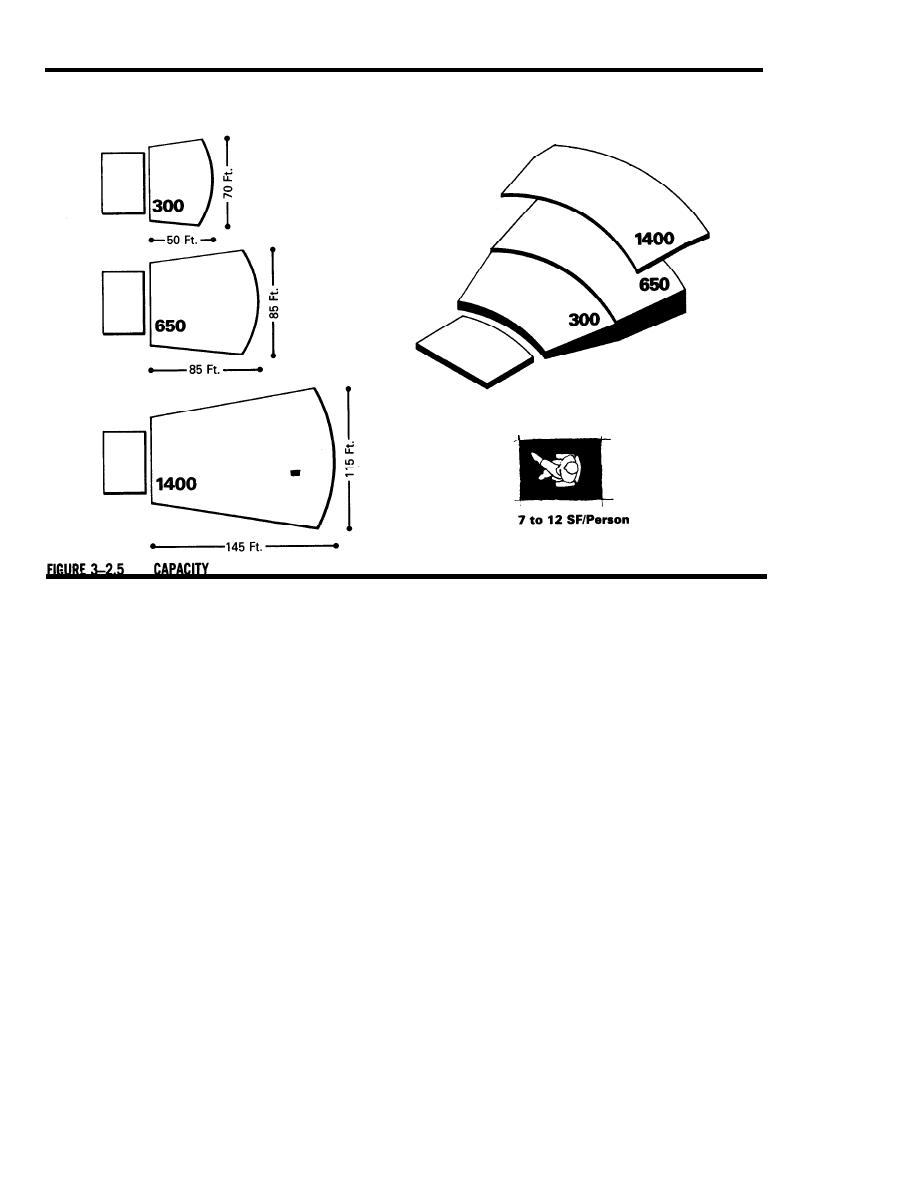
DESIGN GUIDE: MUSIC AND DRAMA CENTERS
DG 1110.3.120
CHAPTER 3: ROOM CHARACTERISTICS
JANUARY 1981
could alter this. General assembly auditoriums
Many existing 300-500 seat facilities are con-
seating 1000 are found on many Army installa-
versions of former 1,000 seat movie houses. The
tions, but they are not designed for Music. Large
10,000 SF movie theater ground plan was di-
field houses, stadiums and amphitheaters seat-
vided either to favor the Stage (with almost no
ing thousands are available for massive events
audience support-only 1100 GSF) or the Front
like rock concerts, with amplification the primary
End (leaving only 2000 GSF for all stage func-
acoustic consideration. Therefore, 1400 seats
tions). Lean-tos were added for dressing rooms
was arrived at by eliminating the larger sym-
and the house would seat 200-250. In most
phony hall as a special or occasional-use facility.
cases, additional space was borrowed for work-
A 70 piece orchestra, somewhat smaller band,
shops, storage and rehearsal at remote loca-
a choir or combined vocal and instrumental pres-
tions. Often, administrative offices were shared
entation (or any of several possible smaller en-
or separately housed. These scattered, tempo-
sembles) would be best suited to a 1400 seat
rary facilities are a serious disadvantage and
Room.
scarcely resemble a Music and Drama Center.
Finally, these are special constraints imposed by
At an installation having a 500 seat facility used
Army regulations. DOD 4270.1-M space allow-
for varying types of activities, the Program Di-
ance criteria were first applied to theaters in the
rector found that it worked well for most legiti-
early 1970's context of found space conversions
mate drama, was too large for "serious" plays,
and all-purpose recreation/entertainment cen-
and too small for musicals which consistently
ters. Section 3-15 of this Guide tabulates area
sold out.
requirements for a range of MDC types; the re-
quirements of even minimum functioning facil-
It is presently difficult to find cause for building
ities exceed the current DOD criteria of 14,000
concert halls within the installation level Army
and 20,000 GSF for small and large MDC's, re-
Performing Arts Program, which tends toward
spectively. The amount of difference is about
the popular (amplified) music of today. Possibly
equal to the Front End (audience support) com-
in the future changing tastes and education
3-10



 Previous Page
Previous Page
